Traditional Braces – Portland, OR
Get a Healthier, More Functional Smile with Braces
Jaw pain and facial discomfort are frequently the result of a misaligned bite. When the teeth do not work harmoniously together, the jaw joint and surrounding muscles suffer as a result. Dr. Teasdale may recommend orthodontic treatment with traditional braces in Portland for TMJ pain to adjust your teeth and bite if they are not functioning together the way they should. He may also finish your orthodontia with revolutionary DTR therapy to ensure you have a comfortable bite that will provide long-lasting relief from TMJ pain.
Why Choose Evolution Dental for Traditional Braces?
- Treatments Guided Using Advanced TekScan Technology
- Dentist with Over 40 Years of Experience
- Accelerated Orthodontics to Shorten Treatment Time
Fixing Misaligned Teeth & Much More
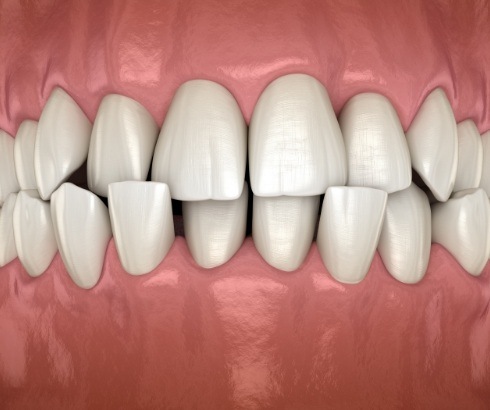
The worst part of having crooked or misaligned teeth is not what you see, although that is most frequently why people are motivated to have their teeth straightened. The problem is much more serious than what you present to others in a social situation. Misaligned teeth lead directly to a multitude of problems, including gum and bone support issues, teeth grinding and clenching, temporomandibular joint dysfunction (or "TMD"), cracking of the teeth themselves near the gum line, head and neck pain, and broken teeth. There are other, less direct, ailments associated with poorly positioned teeth, including diabetes, obesity, and heart and circulatory problems.
Crooked teeth are not something to be taken lightly! It is a condition that progresses and can have a major impact on your life beyond simple cosmetics and discomfort.
We are concerned about how relaxed and comfortable the jaw muscles are, the symmetry of the face, how well the teeth themselves will work in their new arrangement, and how long the results will stay. In the process of applying orthodontics, because we put the teeth where nature originally intended, we achieve a beautiful, comfortable, and radiant smile.
Straightening Teeth While Stopping Jaw Pain

When it comes to getting teeth straightened, most patients are concerned that the end result looks even and symmetrical, a so-called "Front End Alignment" of the “Social Six” teeth that show most prominently in the smile. In reality, that is the easy part. We are far more concerned with how ALL the teeth fit together, ensuring they work as a team instead of fighting each other.
Properly addressing the position of the back teeth has great short and long-term benefits. For one thing, a balanced row of teeth is largely self-supporting, with each tooth touching its neighbors in exactly the correct position, so there is less likelihood of a bad bite developing. For another, teeth that are solidly interlocked in a tight bite tend to lead to grinding, clenching, and TMJ problems. We can work to free up the bite with orthodontic treatment for TMJ in Portland, OR, so the jaws are able to slide freely and easily across each other.
This is why we plan and revise each of our orthodontic cases an average of nearly seven times before we are happy with the aesthetic and functional results and why we monitor the movement of your teeth regularly. It is also why we are comfortable standing by our fee as the ONLY fee you will pay — including, if necessary, any refinements. Finally, it is why we achieve such consistently great results.
Orthodontic Treatment for Teeth Grinding & Clenching
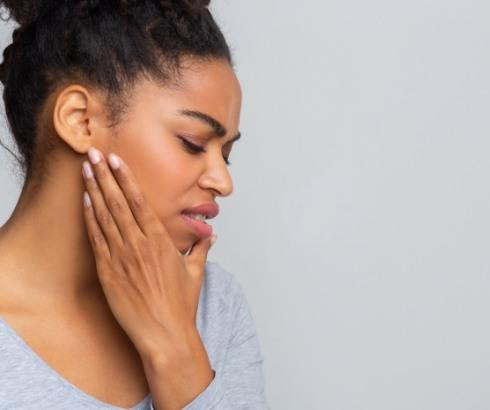
A great many people have jaw clenching and teeth grinding issues, and many may not even realize it. At Evolution Dental, we look for telltale signs, such as flattened tooth surfaces, loose teeth, chipped tooth structure, little divots from the teeth near the gum line, facial asymmetries with the lower jaw, muscle tension, and TMJ issues. Most of these conditions are caused by how the teeth fit together. Because these symptoms develop slowly—sometimes over several years—individuals may not even recognize that there is a problem with their bite.
At Evolution Dental, we treat teeth grinding and jaw clenching problems comprehensively and conservatively. Treatment could be something as minor as adjusting one spot on a single tooth, or it may require more involved treatment, using computers to pinpoint the timing and force of each tooth during a bite.
Understanding the Cost of Traditional Braces
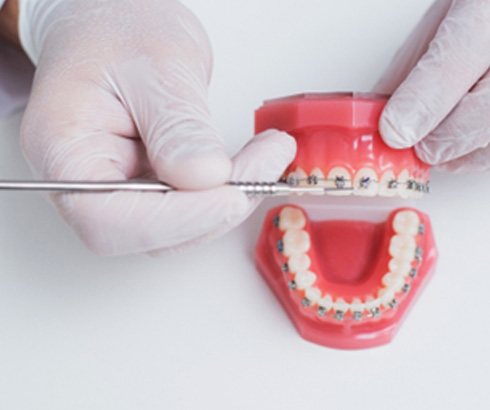
Since no two smiles are the same, no two treatment plans are the same. This means that there isn’t a one-size-fits-all price for traditional braces – it’s 100% tailored to your specific dental needs and smile goals. As always, our Portland dental team is here to help answer any questions you have. And, if you have any questions about the cost or need help navigating the financial aspect of your treatment, we’re here to help with that as well. In the meantime, you can read on to learn more about the cost of traditional braces!
Factors That Affect the Cost of Traditional Braces
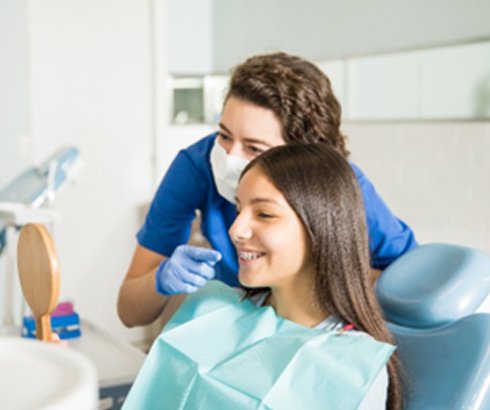
At your initial consultation, Dr. Teasdale will sit down with you to learn more about your dental history, ask you a few questions about your smile goals, and examine your teeth, gums, and bite. Before creating your custom treatment plan and providing you with an estimate of the price, he will determine:
- The complexity of your misalignment
- If you need to straighten one or both arches of teeth
- If elastic bands, space maintainers, or any other orthodontic accessories are needed
Naturally, once you begin your treatment other factors will come into play, including how well you follow the guidelines. Remember, poor habits, like eating hard, crunchy, and sticky foods, can increase your chances of experiencing an orthodontic emergency, which can accrue additional costs.
Professional Braces vs. "DIY" Braces: Which Costs More?
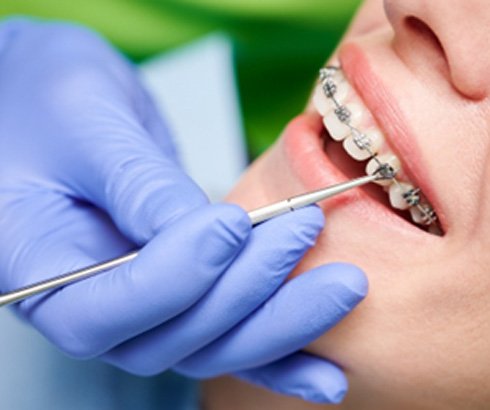
“DIY” braces often focus on the low upfront cost. However, many of these alternatives result in worsened misalignment and, in more extreme cases, tooth loss. That’s why it’s important to always choose professional orthodontic treatment, even if it comes with a higher upfront cost. Remember, the position of your teeth impacts much more than just your confidence; they also impact your bite and speech. So, if you want to address overcrowded, spaced-out, or otherwise misaligned teeth, always place your smile in the hands of professionals.
Does Dental Insurance Cover Braces?

Although it’s not the case for every patient, many dental plans do cover a portion of the cost of braces. If you want to learn more about your benefits, it’s important to get in touch with your insurance provider. That way, they can review the fine print on your plan, explain your coverage, help you understand your out-of-pocket expenses, and answer any questions you have about the cost of straightening your teeth.
Options for Making Braces Affordable

If you don’t have dental insurance, then talk to our team about CareCredit! This is a third-party financier that’s helped millions of patients over the years. Their payment plans prevent you from having to pay for the entire cost of your treatment upfront. Instead, you can review their wide variety of payment plans and pick the one that fits the best with your monthly budget.
Traditional Braces FAQs
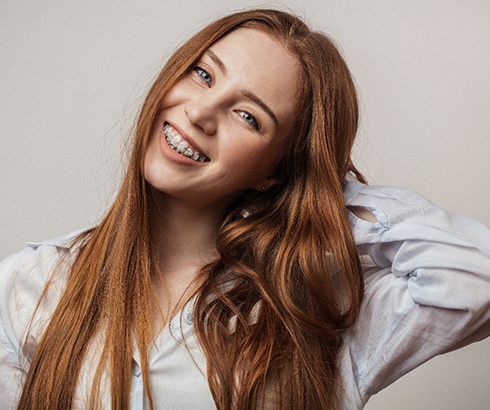
Braces are a style of treatment that most people are familiar with, often secondhand. However, they’re also a treatment that has changed considerably over the years, which means that there’s a lot about how braces work now that may not be familiar to you. That’s to say nothing of the rampant misinformation that comes with any popular dental treatment.
If you want to understand more about traditional braces and to clear up any misapprehensions that you may have, here are answers to some questions that you may have.
Why Do My Teeth Feel Loose with Braces?
One of the first things that most people notice when they start wearing braces is that their teeth feel a little bit “floaty” or “loose.” This causes some patients to become a little bit concerned, but don’t worry—it’s perfectly normal.
In order for braces to work, the teeth have to become more mobile. This is why most patients have to wear “spacers” before treatment. These spacers stretch out the periodontal ligament, which is what secures the tooth to the jaw. These ligaments being stretched is what causes that floating feeling.
Can I Get Traditional Braces on Just My Top or Bottom Teeth?
If you’ve noticed that your teeth on one ridge are worse off than the other, it can be tempting to just try to get braces on either your top or bottom teeth. While this is occasionally possible, it’s not usually a good idea.
This is because straightening teeth typically causes them to move forward or back. Straightening crooked teeth causes them to move forward, and fixing gapped teeth causes them to move back. If you straighten one layer of teeth and not the other, you may potentially wind up with either an over- or underbite.
While you may be able to get away with having braces on just one set of teeth in some circumstances, this isn’t something you should count on.
How Long Do Traditional Braces Take?
The exact length of treatment time tends to vary greatly between patients, but most people will finish the treatment after between one and three years. There are several factors that may affect that timeline.
The first is age—while braces are helpful at any age, older people’s teeth are more solidly set in the jaw, meaning that treatment will take longer. The severity of your misalignment also affects how long treatment will take.
Finally, part of the time it takes to complete your treatment comes down to how well you follow guidelines, e.g. whether you wear your rubber bands consistently or not.
Can You Drink Coffee with Traditional Braces?
You can still drink coffee if you have traditional braces, but just as normal, you can start to discolor your teeth. In some cases, you may even start to yellow your brackets.
Even if you don’t notice your teeth changing color over the course of the braces treatment, you may see it once your braces come off. If your teeth have gotten darker, you might find that you have light spots under your brackets.
If you want to prevent that, you may want to reduce the amount of coffee you drink, as well as cutting out other factors that may stain your teeth. We’ll be happy to talk to you about how to help you do that.
Am I Too Old to Get Braces?
Are you in your 20s, 30s, 40s, 50s, or even 60s? If so, you might feel like the ship has sailed on having straight teeth. That’s not the case! In fact, there’s really no such thing as being “too old” for braces because patients of all ages can benefit from a beautiful smile, improved oral health, and an aligned bite. So, don’t let that number stop you from scheduling an appointment with our Portland dental team.
What Can You Not Eat with Traditional Braces?
As you may already know, traditional braces do require you to alter your diet. That’s because extremely crunchy foods, like whole apples and tortilla chips, can cause a bracket to come loose or a wire to break, and we want to avoid that. The good news is that there are plenty of delicious foods that are still on the table, including mac and cheese, kiwi, mashed potatoes, scrambled eggs, and oatmeal.
Tip: Keep a pouch of travel-sized oral hygiene essentials with you, like a toothbrush and toothpaste, so cleaning your teeth and removing food particles from your braces is easy on-the-go!
Do Traditional Braces Hurt?
Any orthodontic treatment, including traditional braces, comes with some soreness and pressure from time to time. After all, your teeth are being moved into completely new positions! Fortunately, there is some good news: these sensations are only temporary. Plus, you can alleviate them even sooner if you avoid crunchy foods (which you should be already), sip on cool water throughout the day, and take OTC pain medication as directed.
Can I Chew Gum with Traditional Braces?
Like caramel-filled candies and taffy, gum can easily tug your brackets or wires out of position, which can lead to considerable discomfort and warrants a same-day visit to our Portland dental office. For that reason, we recommend not chewing it during your orthodontic treatment. If you smell a bad odor on your breath, try brushing, flossing, and rinsing with mouthwash.
Tip: Keep sugar-free mints with you so you can freshen your breath for times when it isn’t convenient to complete your oral hygiene regimen.
What Happens After You Get Your Braces Off?
After we remove the brackets and wires, you’ll get to see your new smile for the first time! Then, we will start the process of having a retainer made. This is a very important step in the orthodontic treatment process because the last thing we want is for your teeth to drift back into their previously misaligned positions. Simply put, to protect all of the time and money you invested, wear your retainer as instructed, and do your best to take care of it so it lasts.
Can You Whiten Your Teeth While Wearing Braces?
Getting a professional whitening treatment while wearing braces is usually not very effective. The bleaching agents used in teeth whitening procedures can’t reach the spots where brackets cover your teeth, and overlapping pearly whites can result in uneven coloring.
If you’d like to keep your teeth white and bright during your braces treatment, consistent oral hygiene is likely going to be the best method. Let us know whether you’d like more aesthetic advice, though, and we can discuss other ways to promote an evenly toned smile!
Can Traditional Braces Fix TMJ?
In cases where TMJ disorders are caused by jaw or tooth misalignment, braces can absolutely solve the problem and alleviate the strain on your mouth!
When your upper and lower jaw aren’t aligned properly, excess pressure is exerted on your TMJ, often causing discomfort or trouble opening and closing your mouth. Fortunately, traditional braces can be configured to realign your jaw as well as your teeth.
Crooked teeth distribute uneven pressure by creating an uneven bite. Essentially, your teeth don’t line up correctly when you chew or bite down. But after straightening them out with traditional braces, your jaw should be better able to handle the pressure, eliminating uncomfortable symptoms.
Do Traditional Braces Cost More Than Invisalign?
Traditional braces have comparable average treatment costs to Invisalign. However, dental insurance policies are more likely to cover braces expenses than clear aligner costs. Since clear aligners like Invisalign are also removable, it’s important to consider your habits. Losing or damaging aligners can add to your overall expenses.
We’d be happy to help you determine the most cost-effective solution for straightening your smile! If you’re eligible for both braces and Invisalign, we can compare your likely treatment costs during your consultation to make sure you’re getting the most out of your budget.
